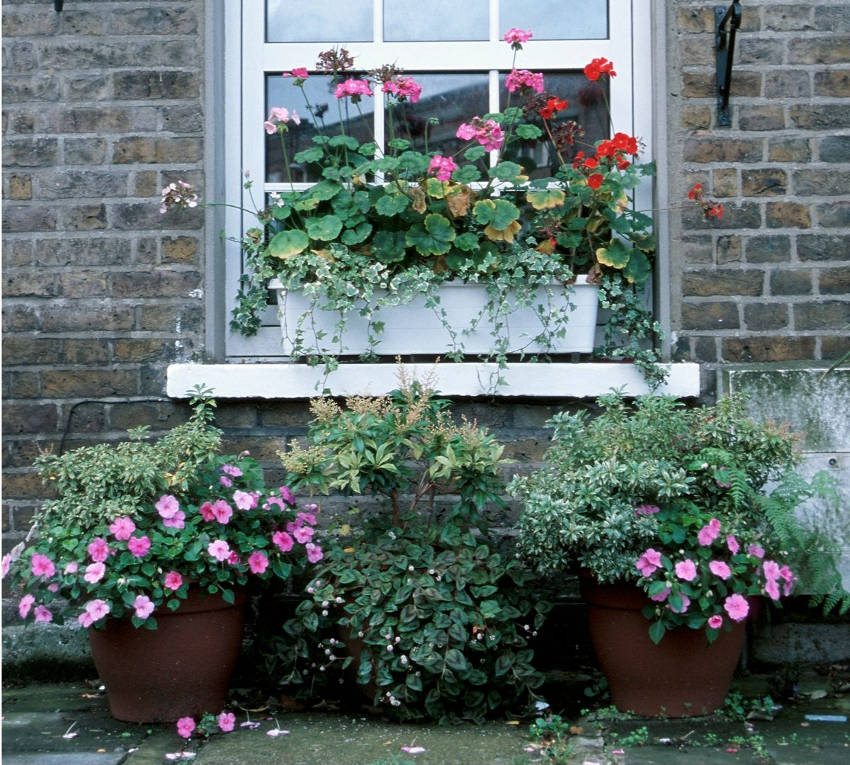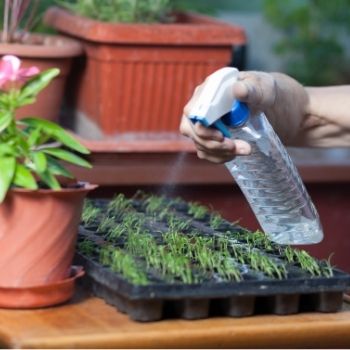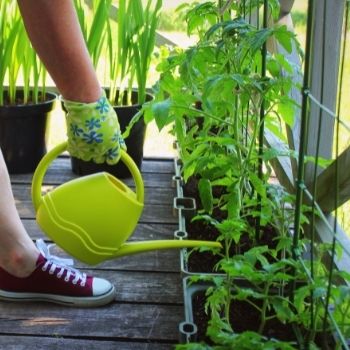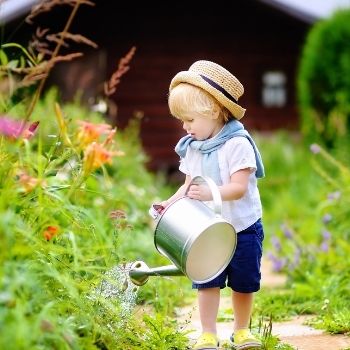Container gardening offers many excellent advantages compared to growing in the open soil. It gives you greater control over the conditions for individual plants, cuts down on weeding, and lets you garden on a small patio or balcony.
However, there's one drawback which isn't always made clear in gardening guides: container plants are a lot less forgiving of incorrect watering. It's easy and tempting to water daily, but too much water is just as bad as too little, and it can be hard to strike the right balance.
Why Containers Make Watering More Complicated
If you grow native plants in open soil, you can mostly rely on rainfall to provide the water they need, along with some topping up in dry spells. With containers, things are trickier for several reasons.
- Different plants need different amounts of water, and container gardening tends to pack more varieties into a small space. One size doesn't fit all across a patch.
- The material a pot is made from changes how fast it dries out. Plastic pots, for example, seal in plenty of moisture, while terracotta pots 'breathe' vapour out through the sides.
- The shape of a pot influences its water retention too. Containers with a large soil surface area compared to volume will lose moisture more quickly.
- Potting compost comes in several types, and each holds on to water differently.
- Container plants often have smaller root systems, and so are less efficient at drawing up moisture when it's available.
- Containers are often placed on suntraps such as terraces, or hung in the breeze as baskets, and so water evaporates more quickly.
- Smaller pots can go from fully moist to entirely dry in a matter of hours, making timing essential.
All of these factors mean careful attention to watering is an essential part of container gardening. Two pots next to each other could need very different treatment, rather than a simple daily drenching across your whole collection.
Diagnosing a Watering Issue by Checking the Soil
Drooping leaves, limp stems, discolouration, and premature leaf or petal loss are all signs that a plant is under water stress. Unfortunately, any of these could suggest both underwatering and overwatering, and so aren't reliable symptoms for a diagnosis.
Clear signals of overwatering include mould, rotting, and slime on the soil surface. If a plant is clearly shrivelled and browning, then dryness is probably the cause. In both these cases, it may be too late to salvage the situation.
The only safe way to check that a plant is enjoying the right moisture balance is to check the soil in the container regularly. However, simply looking at the compost's surface won't tell you much about the conditions where it really matters, down at the root level.
You can buy water gauges which give an accurate figure for the compost's moisture, but in most cases this is technology for technology's sake.
For a much simpler method, poke a finger 5cm or deeper into the soil. If your finger comes out bone dry and dusty, more water is needed. If it comes out wet and dirty, you likely have a waterlogging problem. If your finger is moist and only slightly grubby, conditions are just about right for nearly all plants.
How to Solve Dryness
The obvious answer to a dry container is to add more water, but it's not quite that simple. Once potting compost has fully dried out, it can become water resistant and won't respond to the attentions of a watering can.
Instead, for smaller pots, place the entire container in a larger bucket and fill with water up to just below the soil surface. Leave to soak until the compost is noticeably moist on the top.
For larger pots, poke several holes deep into the soil and water slowly and carefully, repeating a little and often until the soil seems to be taking water in normally again.
Once the soil is fully rehydrated, return to regular moisture checking and watering as necessary. If dryness seems to be a constant problem, consider repotting into a larger container that will retain moisture for longer, perhaps adding water-retaining crystals (also known as hydrogels) as you do so.
How to Solve Waterlogged Pots
Depending on the severity of the waterlogging, your pot may dry out naturally if you leave it in a warm and breezy place. However, it's prudent to repot the contents in dry soil to speed things up, as this will also replenish the drowned soil with nutrients and essential microbes.
Repotting also gives you the chance to improve drainage by adding broken crocks to the bottom of the container, using a lighter compost, or mixing sand into the soil to prevent the problem recurring.
Good Container Watering Practices
Even if you feel you've got your watering routine just right for your current crop of container plants, following a few good watering practices will help prevent any future problems.
- Check your containers for moisture daily, or more often in hot weather. A small pot can dry out in a few hours in the right conditions.
- Water containers slowly and steadily so the water has chance to soak in rather than flowing down the sides.
- Remove your watering can's sprinkler head, so that you can water the soil and not the plant. This reduces the risks of both scorching and mould.
- Adding a layer of mulch to containers will even out evaporation over changes in weather.
- Water early in the morning if you can, or in early evening if that's more convenient. Avoid watering in the midday heat when the moisture risks evaporating before it reaches the roots.
- However, if your plants look dangerously thirsty, water immediately whatever the time or weather.
- Before potting up a new plant, choose the right compost mix for the plant type, such as cactus, flower, or vegetable. This will help match water retention to the plants' needs.
All this may seem excessively complicated, but don't let it put you off growing in pots. Giving each plant the water it needs just takes a little attention and practice, and the rewards of container gardening more than make up for the extra effort.






